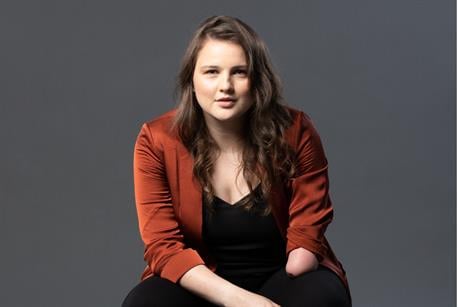
By Anna Johannes, strategist – inclusive design team at Interbrand
The past two-and-a-half years have awakened our industry to social movements that – without the global pandemic and associated impact and behaviour change – might have taken a while to get where we are today.
But with much more to be done, the looming recession and progress on 2020 promises slowing, how can the advertising, branding and media spaces continue (or in some cases, even begin) to push for progress?
And what is on the horizon this year as we work to build a more inclusive world?
The way we have considered diversity, equity and inclusion and end consumers are remarkably similar. We tend to think of gender, race, ethnicity, class, sexual orientation, disability and other identities as separate.
However, the truth is that they all intertwine – and so should the way we interact with them.
Our industry relies on understanding people, yet historically marginalised communities still don’t feel represented in mainstream media.
This is because it is not enough for us to target only certain aspects of a person. People are complex and identify as much more than just their income, ethnicity or who they love. So, what will be different in 2023?
An answer stems from a concept that is 30 years old – intersectionality. It was coined by Kimberlé Crenshaw in 1989 and gets to the heart of how to make a more lasting impact and change.
It shows that people and our unique struggles are not simple and can’t be solved by focusing on a single issue – because systems of oppression overlap the same way our identities do.
Brands and agencies alike share external goals – they want to create spaces where employees can bring their full selves to work, yet we still focus on numbers and cold metrics when subsequently reporting on these goals.
So, how can an employee feel like bringing their “full self” if only fragments are considered worth actioning against?
In 2023 and beyond, we will need to work harder to recruit, hire, and maintain intersectional, diverse employees from the top down. This means keeping DE&I prioritised, part of the C-suite and part of our bottom line, no matter what the climate.
We must also understand that DE&I and intersectionality are not separate from marketing, finance, management, but are underlying drivers of business itself. It’s also not something for just the DE&I team to work towards.
Intersectionality depends on allyship and advocacy from everyone to help build safer places for people to thrive and ultimately best serve our stakeholders.
Intersectionality is equally imperative in our external efforts. We have the responsibility to our end consumers and clients to take the time and resources to understand every bit of them.
This means breaking down the walls of how we think about segmentation, diversity and the conventional take on the general population. It means understanding the language of different communities beyond dialect itself.
It means reframing how we do consumer research so marginalised communities don’t show up as statistically irrelevant.
We can do this by rethinking what “hard to reach” means, in the way we do the research itself, so it is accessible to all – treating diverse communities as a standard instead of treating them as a niche one off.
We have made progress in recognising our biases, where our business has lacked diversity and the value of including – listening to and representing – people from all parts of life. But that is just the first part in this journey.
The next stage may be more challenging, but it is essential. When intersectionality becomes a part of who we are and when we can un-silo our thinking of consumers and internal strategy, we will finally be able to understand ourselves, our clients and our consumers better.
Once we can do this, we will be able to create more interesting and effective work, that champions the rich diversity and cultures of the world we live in.









